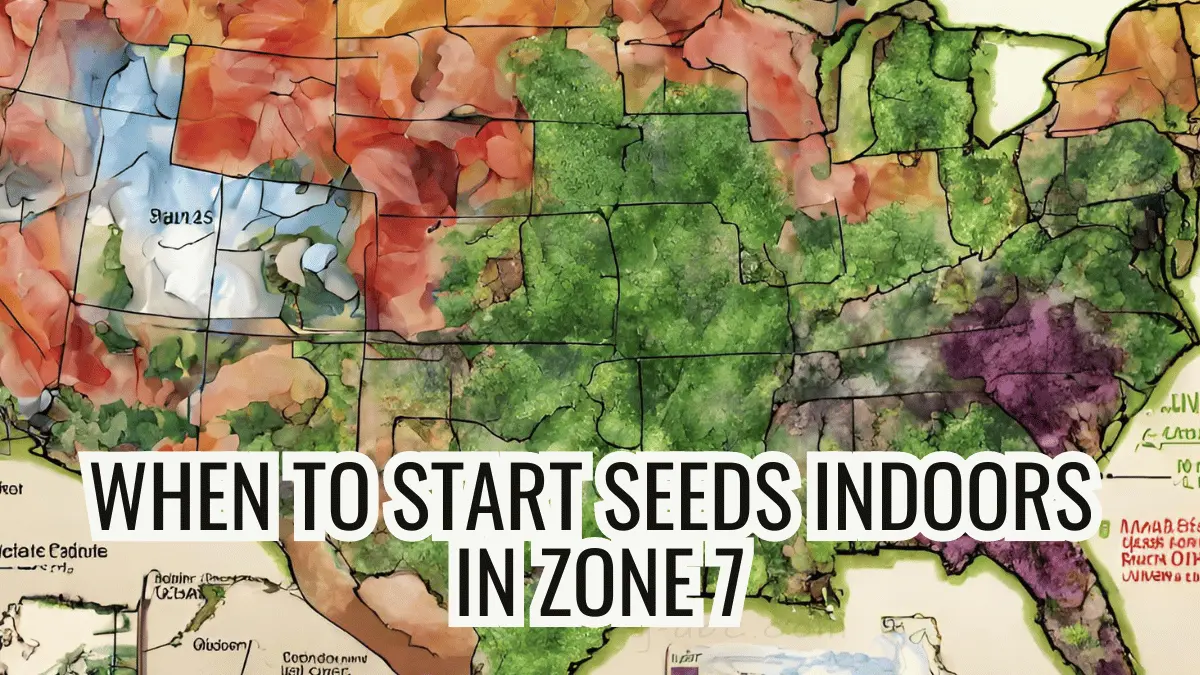We use affiliate links to run our site. When you buy through links on our site, we may earn an affiliate commission, without any added cost to you. Learn more
For gardeners in USDA Hardiness Zone 7, knowing when to start seeds indoors is crucial for getting a head start on the growing season. By starting certain seeds indoors weeks before the last expected frost date, you can enjoy earlier harvests, grow a greater variety of plants, and save money compared to buying transplants.
This guide will cover everything Zone 7 gardeners need to know about indoor seed starting, from understanding your climate conditions to creating a sowing schedule and tips for transplanting seedlings outside.
A Brief Overview of Zone 7
USDA Hardiness Zone 7 encompasses a wide swath of the country, from parts of the Mid-Atlantic south to Oklahoma and Arkansas.
This zone typically sees minimum winter temperatures in the range of 0 to 10°F. The last spring frost date for Zone 7 falls around April 10-30, while the first fall frost date is around October 21-31. This frost-free period of around 180-210 days allows for a long growing season.
The climate varies across the different regions within Zone 7 based on humidity, summer heat, and other factors. But in general, the zone offers abundant sunshine and rainfall during the growing season.
The moderate winters, warm summers, and lengthy frost-free periods make Zone 7 ideal for growing a diverse array of flowers, herbs, vegetables, and fruits.
Why Start Seeds Indoors?
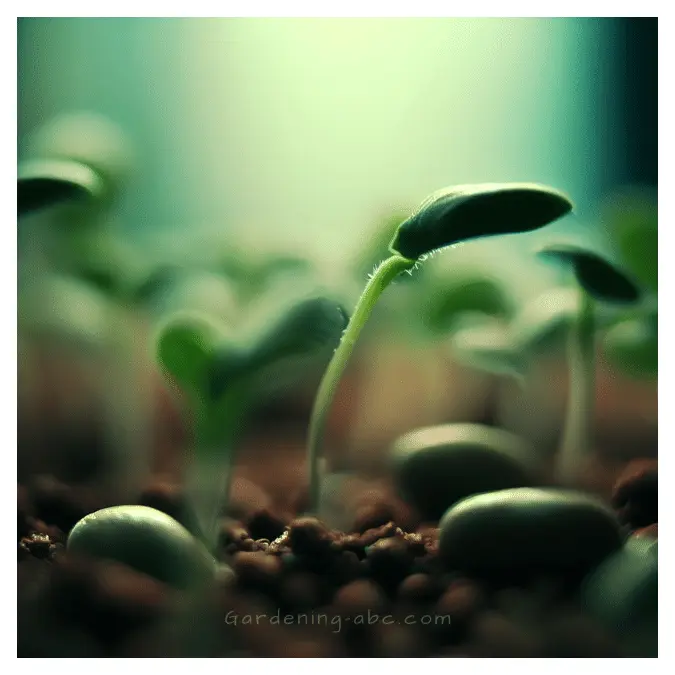
Starting seeds indoors allows gardeners in Zone 7 to get a head start on the growing season. The primary benefits include:
Earlier Harvests – By starting fast-growing veggies like tomatoes, peppers, and melons 4-8 weeks before transplanting outside, you can enjoy ripe produce weeks earlier than sowing directly in the garden after the last spring frost.
Greater Variety – Some plants like eggplant, peppers, and basil simply require a longer warm growing season than Zone 7 can provide without an early start indoors. Starting seeds inside expands the possibilities.
Cost Savings – Purchasing transplants can add up, especially for large plantings. Starting from seed is frugal and ensures you get the variety you want.
Control Conditions – You can regulate moisture, light, and temperature for tender seedlings indoors and harden them off gradually before transplanting outside.
Factors That Influence Timing
Determining the optimal time to start seeds indoors depends on several factors:
Temperature
Cool-weather crops like cabbage, lettuce, and pansies tolerate cooler soil and air temperatures. Warm-season veggies and herbs like tomatoes, basil, and melons require consistently warmer conditions to germinate and grow properly. Most seeds germinate best at 70-80°F.
Day Length
Some plants initiate flowering based on day length or the amount of uninterrupted darkness. Long-day plants like lettuce and spinach require 14+ hours of sun to thrive, while short-day plants like chrysanthemums need 12 hours or less.
Individual Plant Requirements
The ideal seed starting time varies significantly between plant species based on how many weeks they take to reach transplant size. Quick growers like radishes take 3-4 weeks while slower peppers and eggplant take 8-10 weeks.
Recommended Timeline for Zone 7
Here are general guidelines for starting seeds by month based on the factors above:
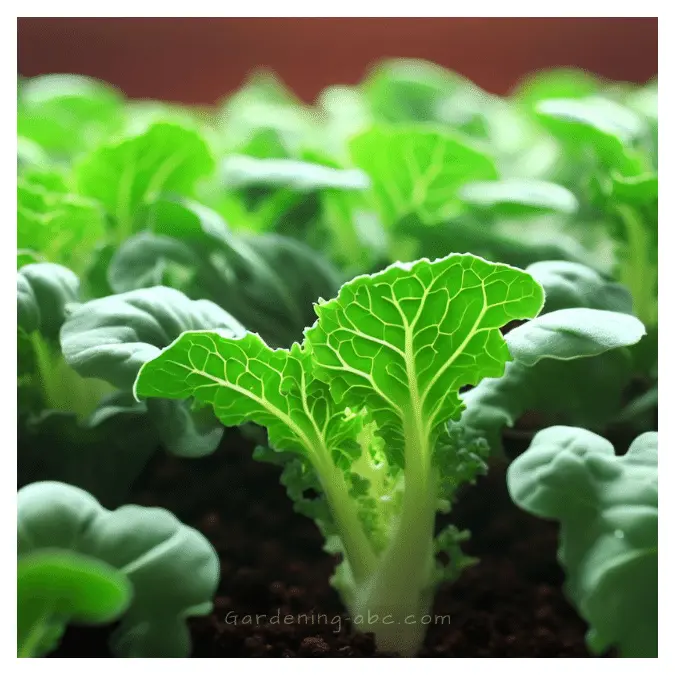
| Month | Recommended Plants | Activities |
|---|---|---|
| January | Broccoli, cabbage, cauliflower, kale, lettuce, onions, spinach. Apples, pears, peaches, plums, cherries, blueberries, raspberries. | Start seeds indoors for cool-season crops. Plant bare-root fruit trees and bushes. |
| February | Garlic, shallots, asparagus, rhubarb, strawberries | Transplant warm-season crops after last frost. Plant beans, okra, sweet potatoes, and pumpkins. |
| March | Potatoes, carrots, beets, radishes, peas, turnips | Harden off and transplant cool-season crops. Start warm-season seeds indoors. Plant root crops. |
| April | Tomatoes, peppers, eggplants, cucumbers, squash, melons, corn | Transplant cool-season crops. Continue starting warm-season seeds. |
| May | Beans, okra, sweet potatoes, pumpkins | Transplant warm-season crops after the last frost. Plant beans, okra, sweet potatoes, and pumpkins. |
| June | Lettuce, spinach, radishes, peas, strawberries | Harvest early crops. Mulch and water. |
| July | Tomatoes, peppers, eggplants, cucumbers, squash, melons, corn, beans, okra | Harvest summer crops. Prune and fertilize. |
| August | Broccoli, cabbage, cauliflower, kale, lettuce, onions, spinach. Clover, rye, vetch | Continue harvesting. Start seeds for fall crops. Plant cover crops. |
| September | peppers, eggplants, cucumbers, squash, melons, corn, beans, okra. Garlic, shallots, asparagus, rhubarb, strawberries | Harvest late summer crops. Transplant fall crops. |
| October | Broccoli, cabbage, cauliflower, kale, lettuce, onions, spinach. Potatoes, carrots, beets, radishes, turnips. Apples, pears, peaches, plums, cherries, blueberries, raspberries. | Harvest fall crops, root crops, and fruit before frost. |
| November | Clean up garden. Store harvested crops. | |
| December | Enjoy produce. Plan next year’s garden. |
when to start tomato seeds indoors zone 7?
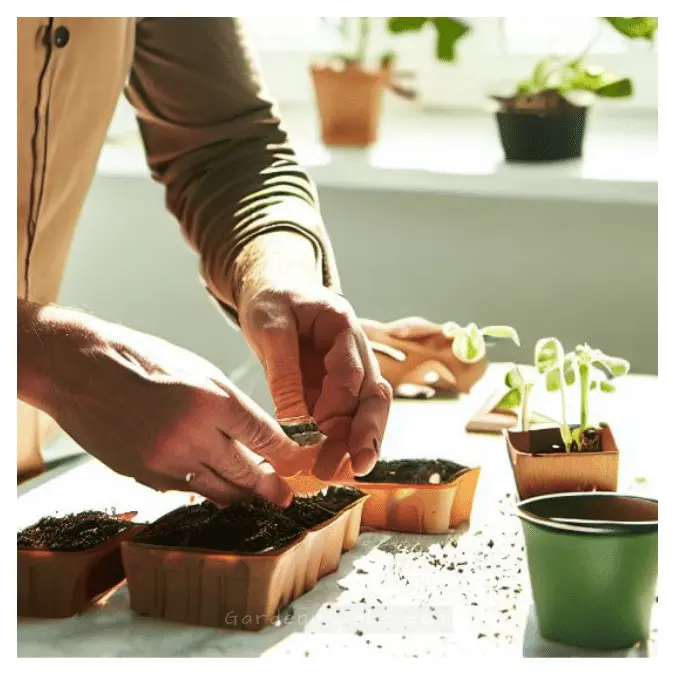
Mid-February is a good time to start tomato seeds indoors in Zone 7. The general recommendation is to start tomato seeds 6-8 weeks before the plants are able to be set out in the garden.
In Zone 7, the last frost date is around April 15th, and the first frost date is around November 15th. Therefore, starting tomato seeds indoors in mid-February would give them enough time to grow before being transplanted outdoors after the last frost date.
Please remember that the exact timing may vary depending on the specific location and weather conditions, so it is always a good idea to keep an eye on the weather before planting
Necessary Supplies and Equipment
To start seeds successfully indoors, you’ll need a few key supplies:
- Containers: Plantable pots, trays, or cell packs made from plastic, peat, or compressed soil blocks. Make sure containers have drainage holes.
- Seed starting mix: Fast-draining, nutrient-rich mix that is finer than outdoor potting soil. Can make your own.
- Lights: Grow lights or full spectrum fluorescent bulbs to mimic spring sunlight. Position 2-4 inches above plants.
- Heat mats or heating strips (optional): Maintains optimal 70-80°F soil temperature for germination.
- Plastic domes or humidity tents: Increases humidity during germination. Remove once sprouted.
- Fertilizer: Use half-strength liquid fertilizer once true leaves emerge. Fish emulsion is ideal.
- Fans: Circulate air and strengthen delicate seedling stems. Prevent fungal issues.
Step-by-Step Guide to Seed Starting
Follow these tips for starting seeds like a pro:
1. Check the seed packet for planting depth, spacing, timing, and care tips. Group together seeds that can be sown at the same time.
2. Moisten seed starting mix and fill containers, gently firming. Leave 1⁄4 inch below the rim for watering.
3. Sow seeds at the recommended depth and spacing. Some seeds require light to germinate, so just press into the mix surface.
4. Cover containers with plastic domes to retain moisture and provide a greenhouse environment.
5. Place in a bright, warm location or use heating mats to maintain 70-80°F. Bottom heat is better than overhead.
6. Check daily and remove domes once sprouted. Thin overcrowded seedlings and move to brighter light.
7. Once true leaves emerge, feed with diluted fertilizer. Transition to larger pots if rootbound.
8. Hardening off is critical before transplanting outside. Move to shade then gradually increase sun and wind exposure over 7-14 days.
9. Transplant on a calm, cloudy day into well-amended soil, taking care to avoid damaging roots. Water well and provide shade until established.
Mistakes to Avoid
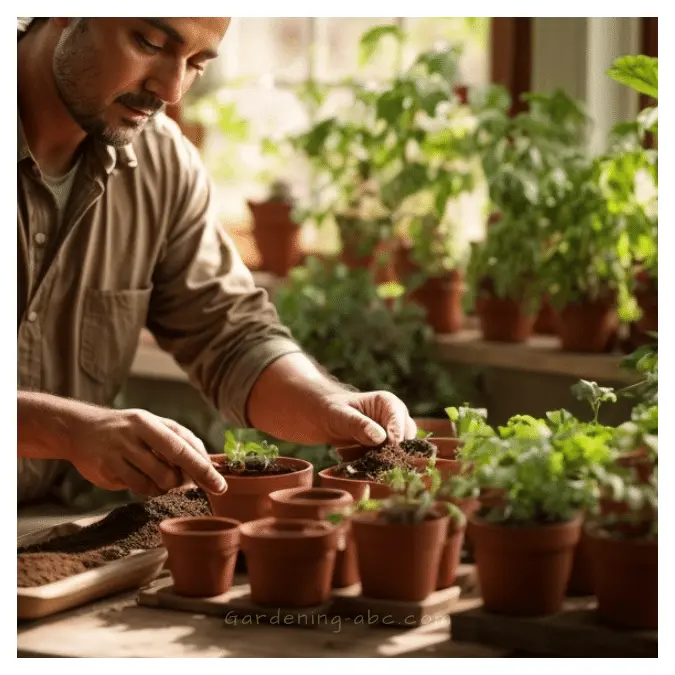
- Overwatering causes fungal issues. Allow soil to partially dry between waterings.
- Leggy, weak seedlings from inadequate sunlight. Supplement with grow lights.
- Skipping hardening off stresses tender plants. Move outside gradually.
- Planting outdoors too early before the soil warms and the danger of frost passes.
- Forgetting to thin crowded seedlings results in competition for light and nutrients.
Special Considerations for Zone 7
- Monitor forecasts and be prepared to protect seedlings from late spring frosts using floating row covers.
- Select heat-tolerant varieties of tomatoes, peppers, melons, and other veggies that can thrive in summer heat.
- Succession plant heat-loving crops in intervals for continuous harvests. Replenish spent beds.
- Start warm-season annuals and herbs for a fall garden in mid-summer to early autumn.
Troubleshooting Common Problems
- Damping off – Fungus caused by poor drainage or overwatering. Allow soil to dry between waterings.
- Leggy seedlings – Insufficient light, grow lights needed. Provide gentle air circulation with fans.
- Yellowing leaves – Natural lower leaves fade over time. True issue if on upper leaves, possibly insufficient nutrients.
- Pests/diseases – Take precautions like using a sterile seed starting mix. Remove any infected plants promptly.
Wrapping Up
Timing is everything when it comes to starting seeds indoors. Use this guide to understand the factors that influence transplant timing and create your own schedule tailored to your specific region of Zone 7. Pay close attention to proper conditions like warmth, light, and hydration.
Now that you know everything you need to know about starting seeds indoors in Zone 7, it’s time to get started! With a little planning and care, you’ll be enjoying a bountiful harvest of homegrown produce in no time.
Be sure to share this post with your gardening friends and family, and explore more helpful articles on our site. And most importantly, have fun!
Amazon and the Amazon logo are trademarks of Amazon.com, Inc, or its affiliates.

Hi there! My name is Prasenjit and I’m an avid gardener and someone who has grown a passion for growing plants. From my hands-on experience, I have learned what works and what doesn’t. Here I share everything I have learned.
